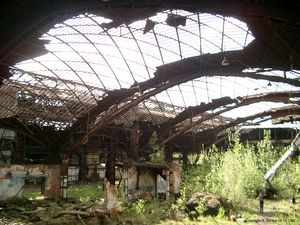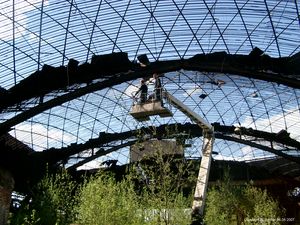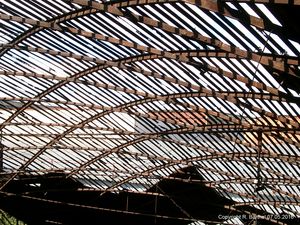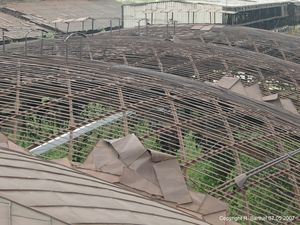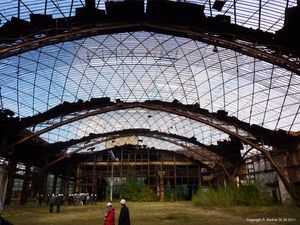Shukhovs Gridshell Structures in Vyksa
In the year 1897, the renowned Russian engineer-polymath Vladimir G. Shukhov built a production hall in the town of Vyksa, a steel mill 150km southwest of Nizhny Novgorod. The production hall is on the vast premises of the Vyksa Steel Works, a manufacturer of metallurgical products, founded in 1757. This building entails the world’s first doubly-curved gridshell structure.
The construction with a footprint of 73.00m x 38.40m consists of five 14.60m wide bays, which are separated by four trussed arches. In the longitudinal direction, the building is braced by six vertical cantilevers, which are integrated into the front facades, and connected to the arches with tie rods. The polygonal top chord of the frames provides the base for the grid shell. The research project analyses the construction of the building, its details, as well as the interdependence of its key elements. Furthermore, its mark on the course of construction history is studied.
The building was in use until the 1980ies. Abandoned and neglected for more than two decades, the building is today in a poor state of repair. Currently, different conservation and renovation strategies are under discussion.
Publications:
Matthias Beckh, Rainer Barthel: The first doubly curved gridshell structure - Shukhov's building for the plate rolling workshop in Vyksa. In: Proceedings of the Third International Congress on Construction History. 2009. Berlin: Neunplus1. S.159-166.
Rainer Barthel, Matthias Beckh, Andrij Kutnyi, Manfred Schuller: Ein Meilenstein im Schalenbau - Schuchovs Halle für das Blechwalzwerk in Vyksa. In: Juliane Mayer (Hg.) Forschen, Lehren und Erhalten - Festschrift für Rainer Graefe. Innsbruck 2009. S. 105 - 122
Cooperation Partners:
Prof. Dr. Murat Gappoev, Staatliche Universität für Bauwesen Moskau
Prof. Dr. Graefe, Universität Innsbruck, Institut für Architekturtheorie und Baugeschichte
Prof. Dr.-Ing. Manfred Schuller, Technische Universität München, Lehrstuhl für Baugeschichte, historische Bauforschung und Denkmaplfege,
Prof. Dr.-Ing. Uta Hassler, ETH Zürich, Institut für Denkmalpflege
Prof. Dr.-Ing. Klaus Hanke, Prof. Dr.-Ing. Albert Grimm-Pitzinger, Arbeitsbereich Vermessung und Geoinformation, Universität Innsbruck.

